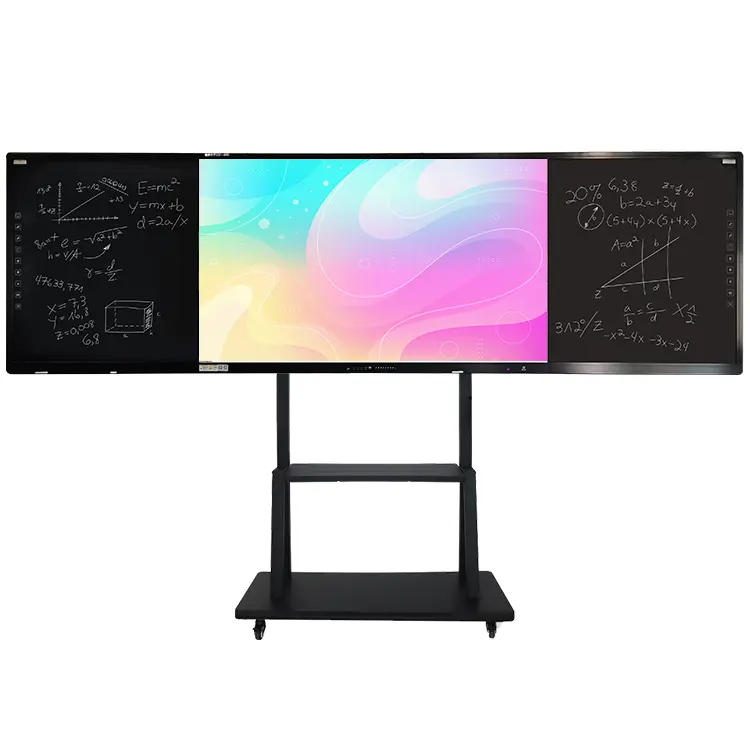With technology interweaving itself into the very fabric of education, the traditional classroom is undergoing a transformation. At the forefront of this educational evolution is the electronic blackboard, a tool that has redefined the way teachers teach and students learn. This innovation is not just a new gadget for schools but a revolutionary approach that enhances engagement, simplifies complex concepts, and caters to diverse learning styles. This article will explore how electronic blackboards have become pivotal in modern education, reshaping the learning landscape and promising a more interactive, efficient, and inclusive future for students and educators alike.
Integrating Tech in Learning
The Shift from Chalk to Digital
The journey from chalk dust to digital strokes marks a significant shift in educational paradigms. Electronic blackboards have made a swift transition from a novel idea to a standard classroom fixture. Gone are the days of smudged chalkboards; in their place stand sleek digital panels, ready to display high-resolution images and multimedia content that captivate the entire classroom.
Enhancing Interactive Teaching
Teachers are finding electronic blackboards to be powerful allies in their quest to make lessons more interactive. With the ability to seamlessly integrate videos, animations, and real-time data into their lectures, educators can craft dynamic presentations that cater to auditory, visual, and kinesthetic learners. This technology enables teachers to transform traditional lessons into immersive learning experiences, encouraging greater student participation and retention of information.
Facilitating Collaborative Learning
Encouraging Student Participation
The ease with which students can interact with content on electronic blackboards is one of their standout features. By allowing students to come up and directly engage with the material, these boards foster a sense of involvement and agency in the learning process. Whether it’s solving a math problem or annotating a text, the tactile nature of interacting with an electronic blackboard can significantly boost student engagement.
Supporting Group Work and Discussions
Electronic blackboards are designed for collaboration, making group work and discussions more efficient and effective. With capabilities for multiple users to input ideas simultaneously, brainstorming sessions become more dynamic. Students can share their thoughts and contributions in real-time, enabling a more inclusive and participatory learning environment.

Streamlining Education Management
Simplifying Lesson Preparation
The life of a teacher involves hours of lesson planning, preparing materials, and grading assignments. Electronic blackboards streamline these tasks by providing a platform where resources can be organized and accessed swiftly. Educators can pull up previous lessons, share homework assignments, and even track student progress, all from the board’s interface. This consolidation of tools and resources saves valuable time, allowing teachers to focus more on teaching and less on administrative tasks.
Integrating Assessment Tools
Assessment is a critical component of the education process, and electronic blackboards make it easier and more varied. Teachers can conduct instant polls, quizzes, and interactive assessments that provide immediate feedback on student comprehension. Such tools not only make assessments more engaging for students but also enable educators to quickly identify and address learning gaps.
Preparing Students for a Digital Future
Equipping Learners with Tech Skills
One of the most profound impacts of electronic blackboards is their role in preparing students for the digital world. Familiarity with such technology from an early age equips learners with the digital literacy skills necessary for future academic pursuits and careers. The board’s interface often mirrors that of other touch-based devices, providing a comfortable and intuitive user experience that translates to broader technological competence.
Bridging the Gap Between Classroom and Career
The skills that students develop by using electronic blackboards have direct applications in the professional world. From presentations and data analysis to collaborative projects, the competencies honed in a classroom equipped with an electronic blackboard align with those sought after by employers. As education becomes more closely tied to technology, students who are adept at using these tools will have a distinct advantage in the competitive job market.
The rise of electronic blackboards symbolizes a significant leap forward in the world of education. These remarkable tools have transformed classrooms into dynamic learning spaces, where knowledge is not just absorbed but actively constructed. Electronic blackboards integrate technology into daily lessons. They facilitate collaborative learning. These boards streamline educational management. They prepare students for the digital age. Electronic blackboards are revolutionizing classrooms. They are shaping the future of education. We continue to embrace these advanced teaching aids. We can look forward to an era of enriched learning experiences. These experiences are more engaging. They are also more efficient. And they are more inclusive for all.
